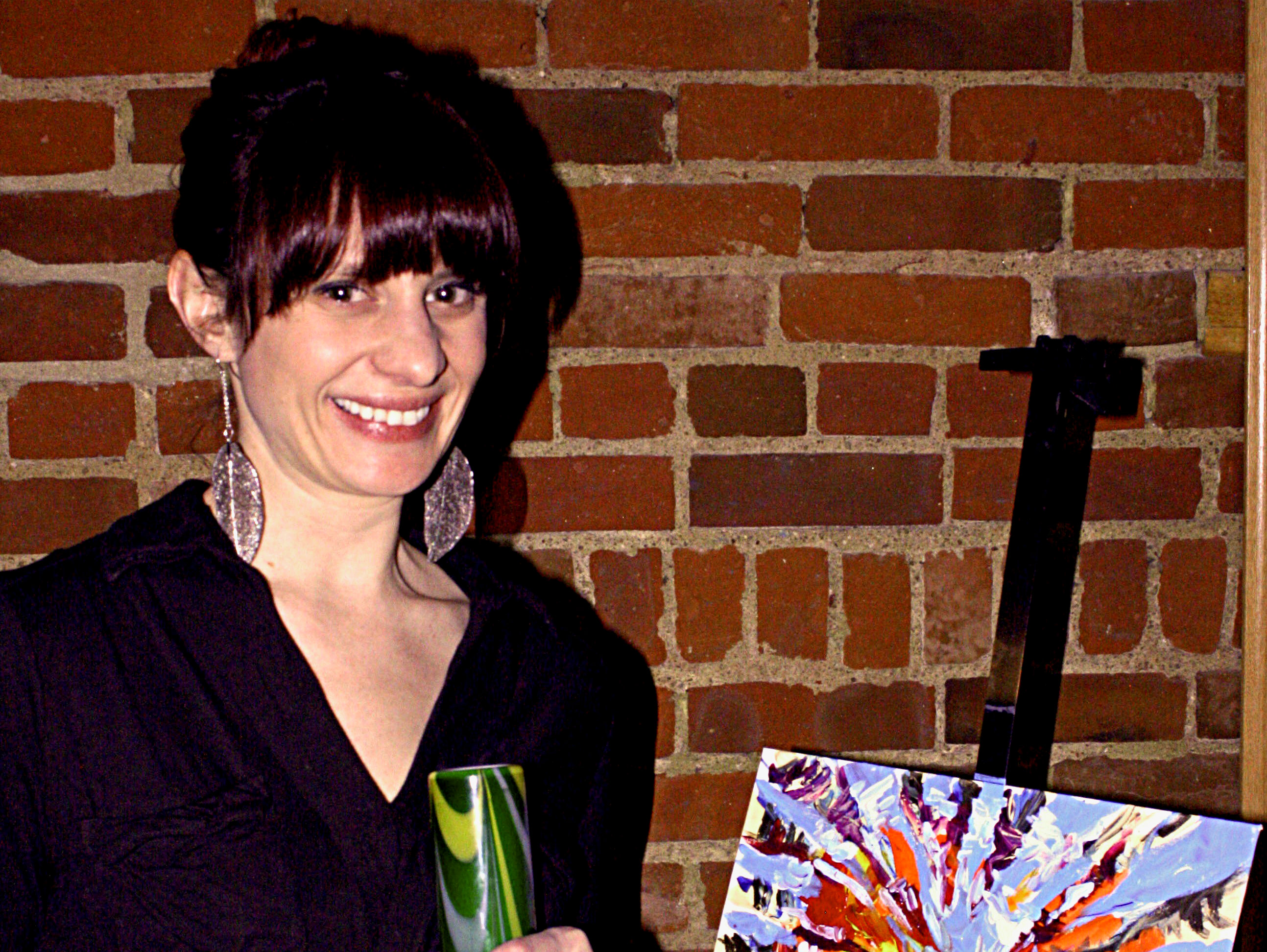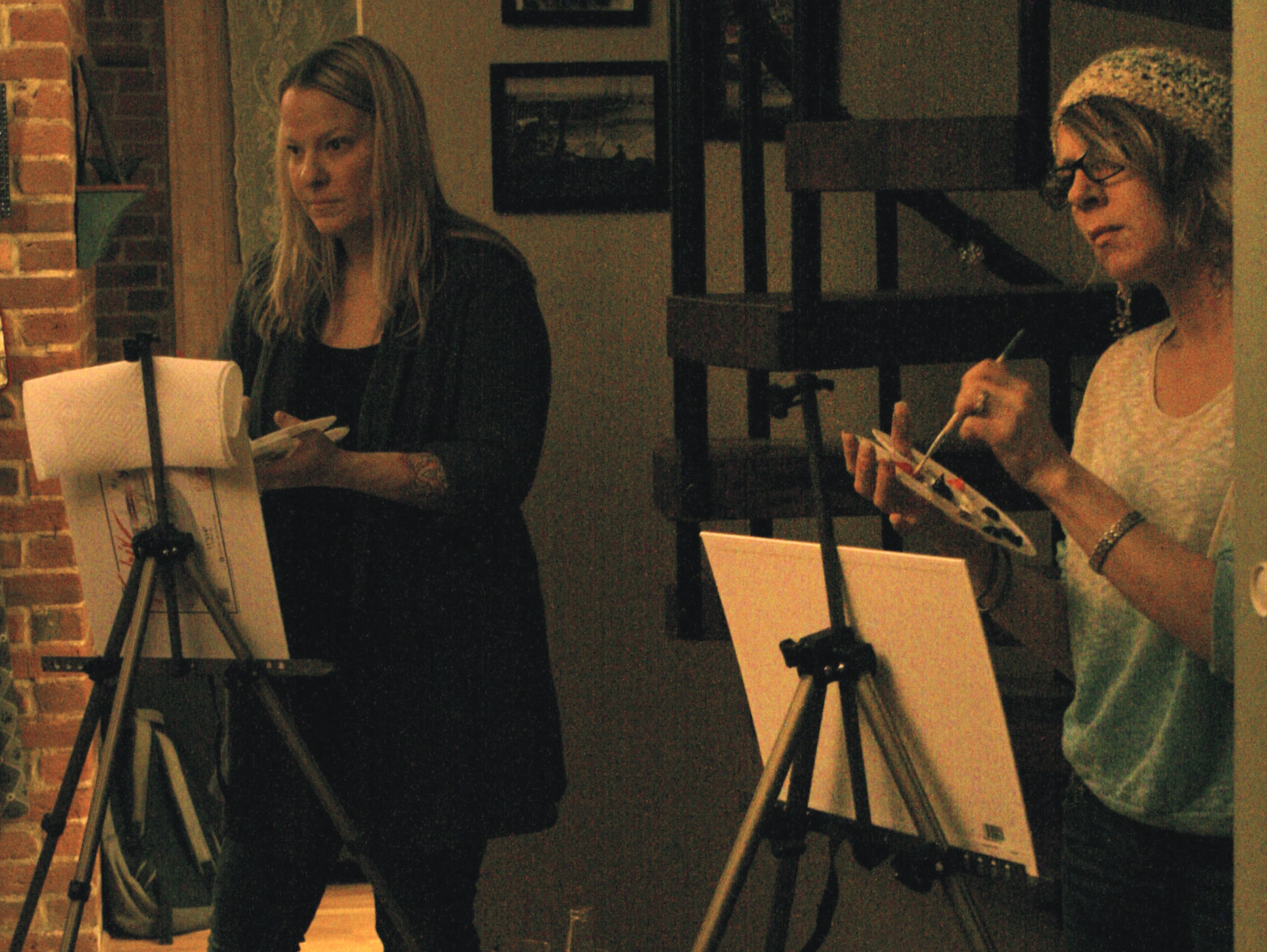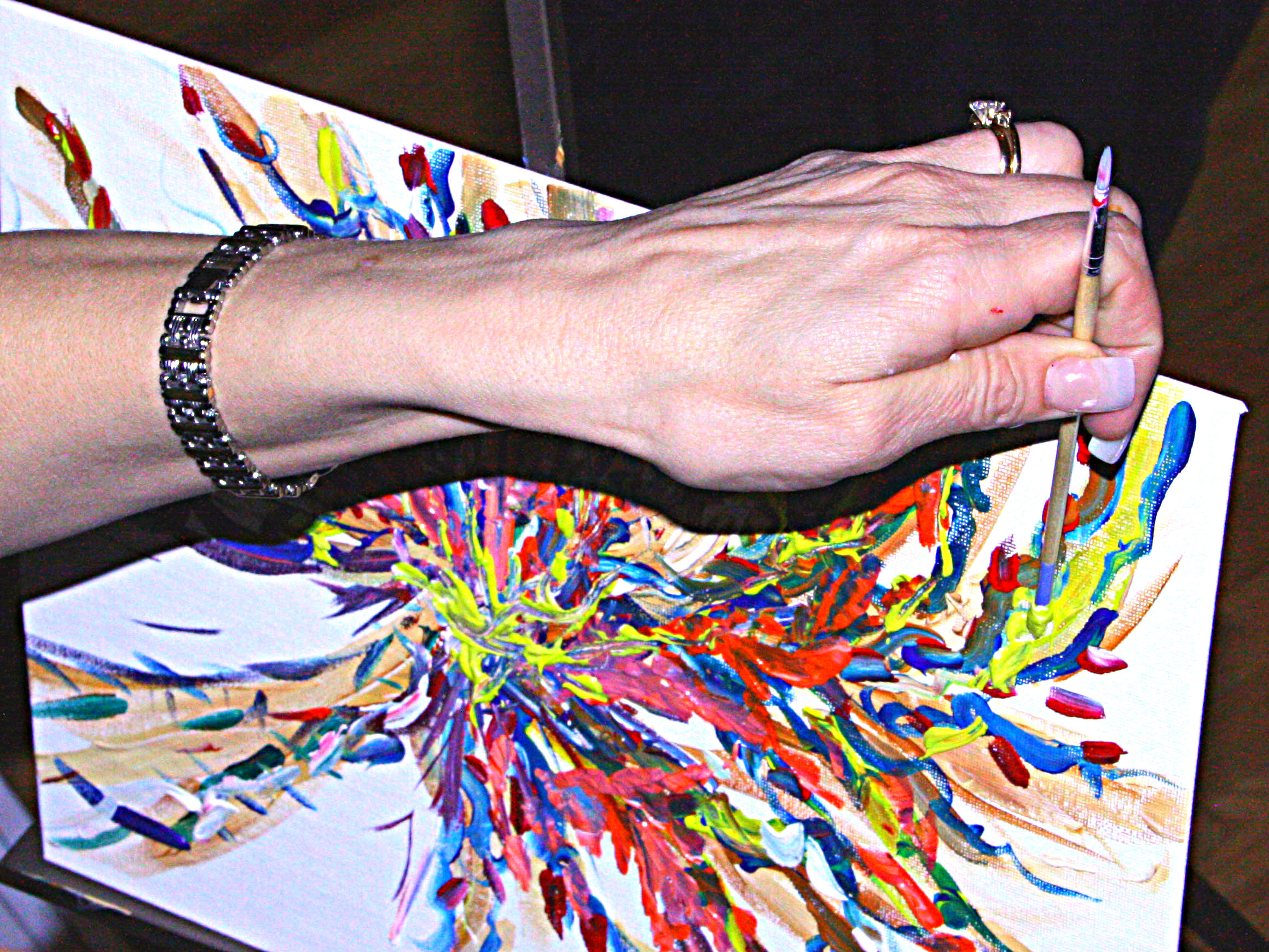
And now that pot is legal in the state of Colorado, it only makes sense that we're beginning to see entrepreneurs capitalizing on the cannabis-creativity connection.
“Everyone is here to meet other people, smoke a little weed and paint,” Heidi Keyes, the creator of Puff, Pass & Paint, a pot-friendly version of the popular canvas-and-cocktails classes, says. “You can feel you’re amongst friends even if you’ve never met anyone here before.”
Puff, Pass & Paint classes have been selling out weeks in advance, forcing Keyes to offer an extra class on Feb. 25.
The event is "Bring Your Own Weed," although Keyes does offer complimentary “samples” of ganja.
More seasoned smokers should bring their own. But for anyone with a vague-to-non-existent history with cannabis--which is not an uncommon occurrence at her classes, Keyes says--one or two tokes from her house-bong should be sufficient to create your own mind-altered masterpiece.
I attended one of Keyes’ first classes earlier this month at her Capitol Hill home in Denver, accepting her complimentary bong-rips and homemade (non-psychoactive) cookies, before being presented with a blank canvas and handed a collection of brushes.
The dozen of us attending the class listened as Keyes gave us detailed instructions on how to turn our white squares of stretched fabric into a grove of aspen trees. Though she repeatedly encouraged us to divert from the path of her instruction if we felt the impulse, reminding everyone that we were here to enjoy the process of creation more than the end result.
“I want to make sure everyone feels comfortable branching out from what I’m teaching,” Keyes, who received her Bachelor of Arts from Carthage College in Wisconsin and moonlighted as a flight attendant before going full time as an artist in 2012, says. “They feel open to painting whatever they feel inspired to paint. In all of my classes, everyone’s painting turns out very different from each other's.”
Due to its status as a schedule one narcotic, scientific research on marijuana’s effect on the creative centers of the brain has thus far been limited. However, a 2010 study at University College London suggests that cannabis may lead to a wider association net in the brain, providing users with the experience of linking concepts and aesthetics that would not otherwise implicitly go together. "Under the influence of cannabis, users showed increases in both automatic semantic priming and schizotypal symptoms compared with controls," the authors of the study say.
"Cannabis increased verbal fluency in low creatives to the same level as that of high creatives," the same scientists from University College London write in a 2012 study. "Acute cannabis use increases divergent thinking as indexed by verbal fluency in low creatives."
Considering that divergent thinking is essential to any groundbreaking work, it’s understandable that creative minds like Carl Sagan, Steve Jobs and possibly even Shakespeare were all proponents of pot.

Like Hunter S. Thompson or John Lennon, Basquiat’s persona is an easy one to climb into, inspiring me to make rapid, unthinking brushstrokes where I prioritized energy over technique.
Keyes encouraged my strategy, though I hadn’t painted anything in years, and it showed.
I was pleased that her goal was to promote divergent thinking over following instructions because my painting ended up looking less like a Monet landscape and more like a tarantula committing suicide upon a peach.
“It’s all about feeling comfortable with being creative,” Keyes says of her classes, which have been selling out much faster than she anticipated. “I’m not expecting anyone who comes to have any experience with art or create any kind of masterpiece. I think it’s very cool that everyone who comes ends up with a very original piece.”
This was reflected in the wide variety of results from the dozen red-eyed artists in the room, whose paintings ranged from expertly rendered, beautifully luminescent scenes of an aspen grove, to charmingly juvenile attempts at Jackson Pollock-style psychedelia.
While Keyes admits that her classes are a derivative of the wine-and-paint events found all over town, after hosting three previous classes, she’s found that marijuana lends a different atmosphere and dynamic to the room than if she’d just served booze.
Local massage therapist Gina Post attended one of Keyes' classes and says she was curious to see how the marijuana painting class differed from the cocktails-and-canvas classes she'd been to before.

“What I hear often from people who’ve been to the wine-and-paint classes is that this one is so much more relaxed,” Keyes says. “It’s the same kind of people who go to those classes, people who are interested in creativity in a group situation. But this is a more open environment where people feel more comfortable being creative.”
Keyes says that during her years as a flight attendant she was forbidden from partaking in cannabis. Now that she’s a full-time artist and owner of one of the countless small businesses in Colorado’s brave new world of marijuananomics, she indulges at her own leisure.
Though she definitively clarifies that pot is not essential to her creativity.
“It’s something I partake in to help me get inside of my work,” Keyes says. “But I don’t think my work is based on that.”








